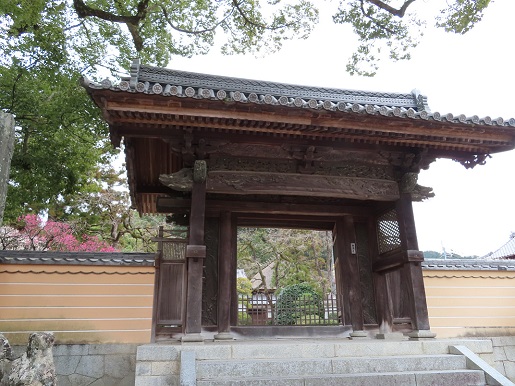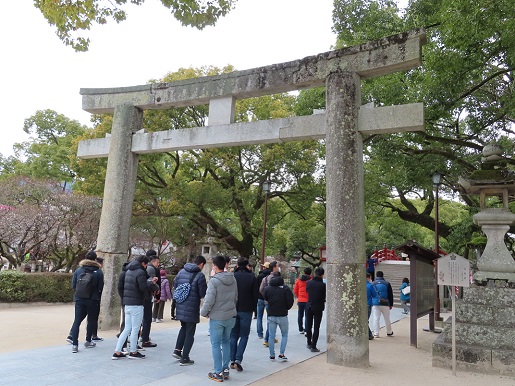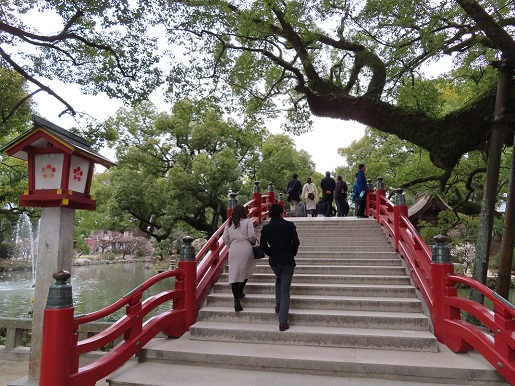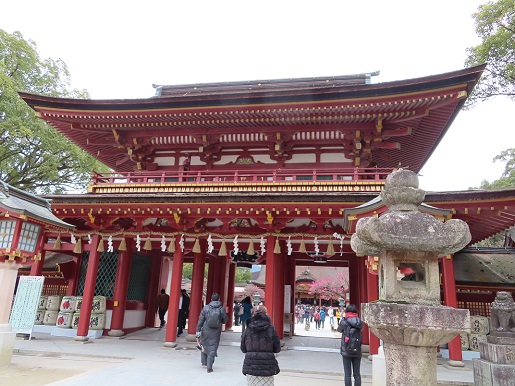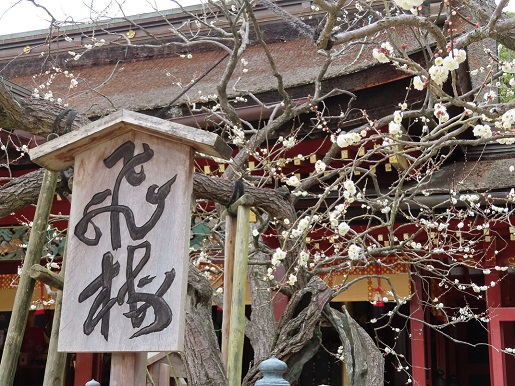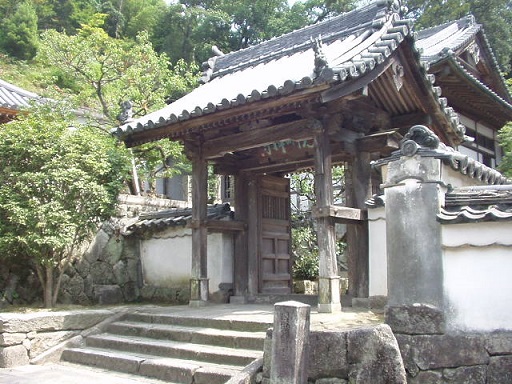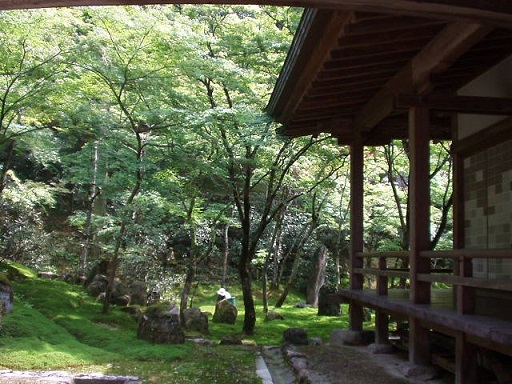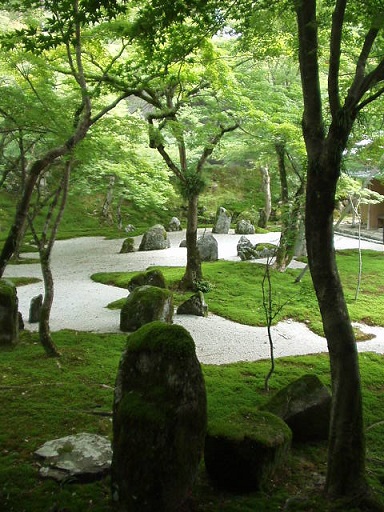|
Dazaifu Tenmangu Shrine
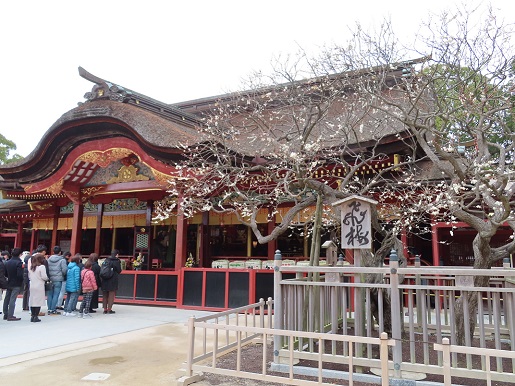
Dazaifu Tenmangu Shrine was built in 919 to enshrine SUGAWARA-no Michizane (845-903) . He was a noble and became a Udaijin, one of two top positions of the Dynasty in Japan from the Nara Age (710-794) to the Heian Age (794-1185) .In 901, SUGAWARA-no Michizane suddenly demoted to the position of Dazaifu Government Office located in Fukuoka, Kyushu, 600 kilometers (375 miles) away from Kyoto where the capital of Japan was located in the Heian Age. He moved from Kyoto all the way to Dazaifu and he despaired very much. SUGAWARA-no Michizane died in 903, just three years after he moved to Dazaifu. After his death, extraordinary natural phenomena happened in Kyoto. The novel people, especially those who made him demoted were scared and the Emperor DAIGO (885-930) decided to build the Dazaifu Tenmangu Shrine to enshrine SUGAWARA-no Michizane.The approach to Dazaifu Tenmangu Shrine continues in front of Dazaifu Station. As the shrine is one of very popular shrine as a shrine to a god of learning in Japan, many worship-visitors were heading to the shrine. 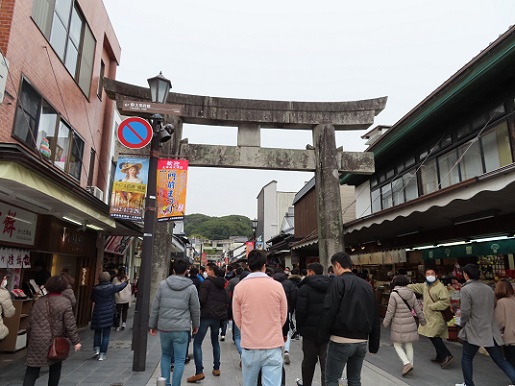
Both sides of the approach are lined with souvenir stores and stores of "Umegae-Mochi", a rice cake with sweet bean jam, which is a speciality of Dazaifu. |


